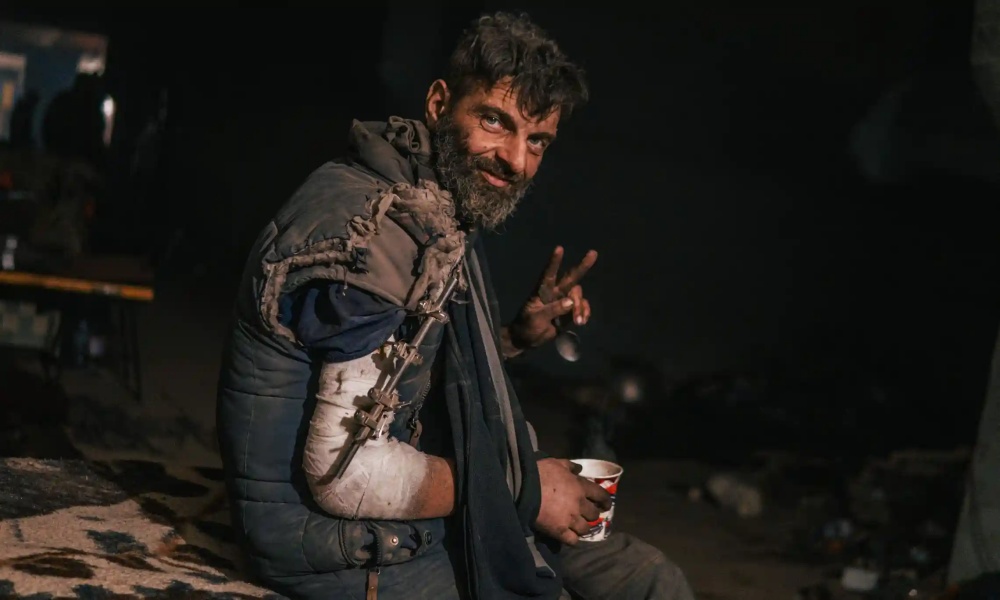If one battle more than any other has defined the ferocity of Russia’s war in Ukraine, it is this spring’s three-month siege of the Mariupol steelworks and the harrowing experience of its last defenders. Hidden in Azovstal, one of Europe’s largest metal-producing factories, hundreds of outnumbered, less-armed, wounded and emaciated Ukrainian soldiers and more than 1,000 civilians withstood one of Moscow’s fiercest military assaults for more than 80 days, reports The Guardian.
“Nobody came out unchanged,” said Oksana, an Azovstal employee who asked not to give her full name. “They were one person when they went in, and a different person when they came out.”
Shortly after the Russian invasion – at the end of February – Mariupol was one of the first major cities to be surrounded. Considered a key target of the Kremlin, the city was the scene of a siege that the Red Cross has defined as “apocalyptic”. The outskirts of the city became the site of a mass grave and the bodies of many more men, women and children were dumped in the streets or buried under rubble.
Ukrainian authorities estimate that 22,000 people died in the fighting. Some of the survivors took refuge in the Azovstal steel mill, an industrial estate covering about four square miles, including a network of underground tunnels. Among the civilians were about 3,000 soldiers, many of whom were members of the infamous Azov Brigade, which, when formed in 2014, included far-right volunteers, some with neo-Nazi ties. In recent years, the brigade has been fully integrated into the Ukrainian army, but for President Vladimir Putin it was the perfect opportunity to make propaganda to convince the public that his story about the “Nazification” of Ukraine was true and that his army would hunt them down. like rats. Putin never imagined that the last defenders of Mariupol would defy his plan for so long.
Cut off from the world and poor in food, Azovstal’s defenders were trapped in the tunnels of the steel mill for more than two months as the Russians launched rockets and incendiary bombs at the site.
By mid-May their fate had become uncertain. The only evidence of survivors came at the end of the siege, when photographer Dmytro Kozatskyi, a fighter from the Azov regiment, released his footage of the siege on social media before his capture. The extraordinary photos show bearded soldiers, many wounded, some with missing limbs.
While the civilians were evacuated, the Ukrainian soldiers were sent to a penal colony in Olenivka, in Donetsk. The Kremlin foreshadowed their death sentence.
But then, in September, Kiev confirmed that Azov battalion commander Lieutenant Colonel Denys Prokopenko was one of 215 Ukrainian prisoners of war released in a prisoner exchange, the largest such exchange since the start of the war. In return, Russia received 55 prisoners from Ukraine, including the country’s most valuable Russian prisoner, Viktor Medvedchuk, the former Ukrainian MP and an ally of Putin, whom Ukraine accused of high treason.
Ukraine’s agreements with Russia stipulated that the released leaders of the Azov regiment would remain in Turkey until the end of the war, which played a role in the exchange. However, some were able to leave the country, including Kozatskyi, who is believed to be in the US. However, it was practically impossible to contact them due to the security measures taken by the Ukrainian government to protect the soldiers given their precarious physical and psychological condition.
In a rare public interview, another ex-convict, Mykhailo Dianov, photographed with a bandage on his broken right arm and weighing 40kg less after his detention in the Russian-controlled penal colony, told Sky News that he thought he had would never survive: “We thought this every day. At Azovstal we thought this was the end.
“When you close your eyes after a month of famine, you forget your family, everything. All you think about is food.”
Speaking about the months of captivity, Dianov said: “They treated us like animals. It was impossible to eat.”
Dianov has also reportedly traveled to the US where he will undergo a long recovery following surgery on his arm. Before the war he was a pianist; his dream is to play again.
President Volodymyr Zelenskiy has promised that “all defenders of Mariupol will be brought home”, but it is unclear how many of them remain prisoners of the Russians. Local media estimates that about 1,000 Azov soldiers are still prisoners of war. And according to Ukrainian officials, the bodies of an unknown number of soldiers remain buried under the rubble of Azovstal.

